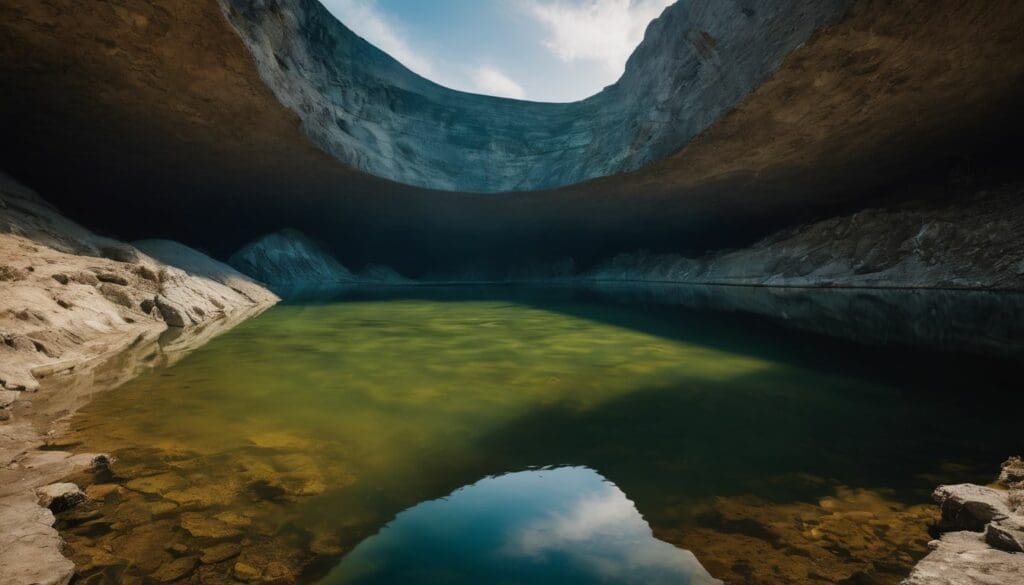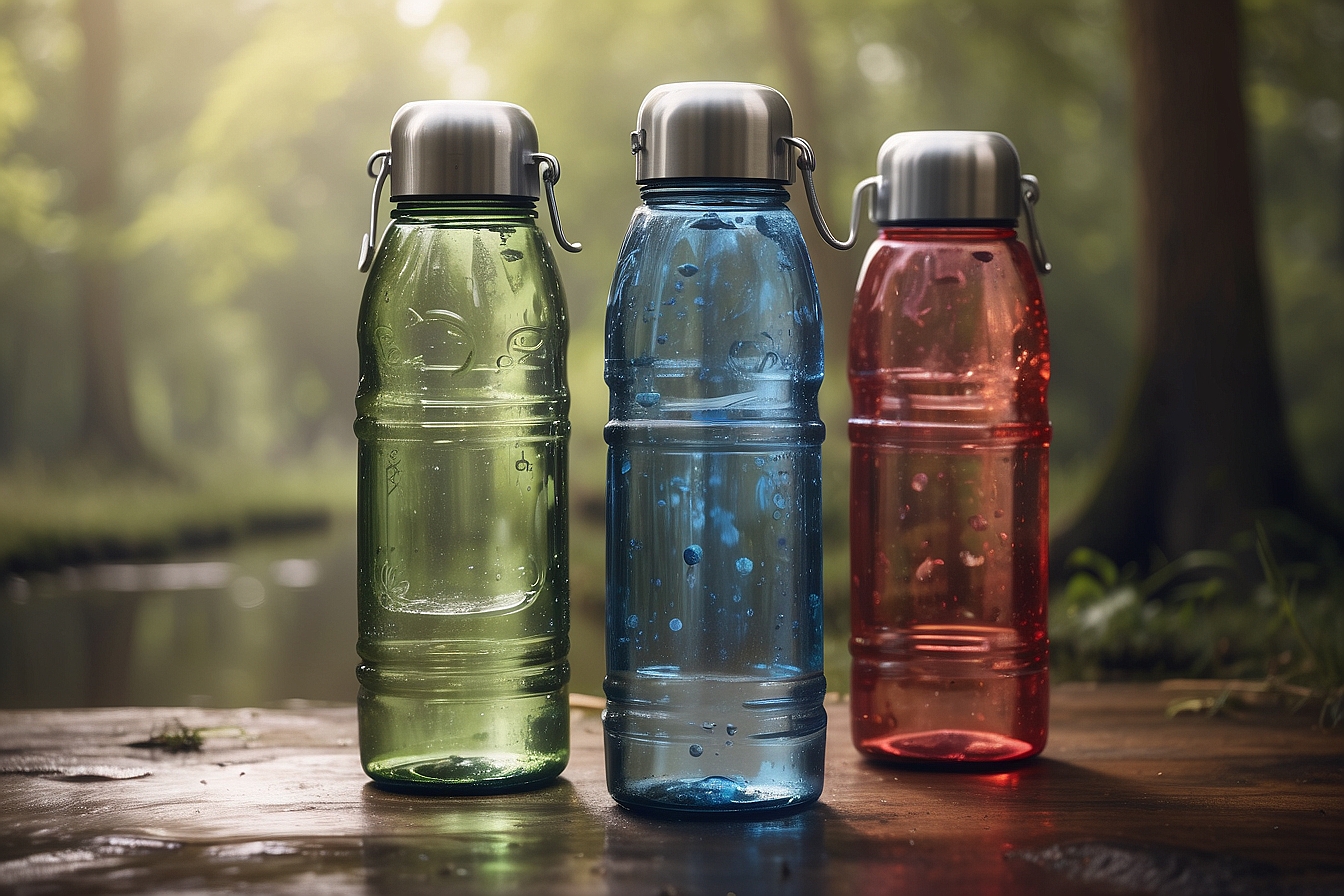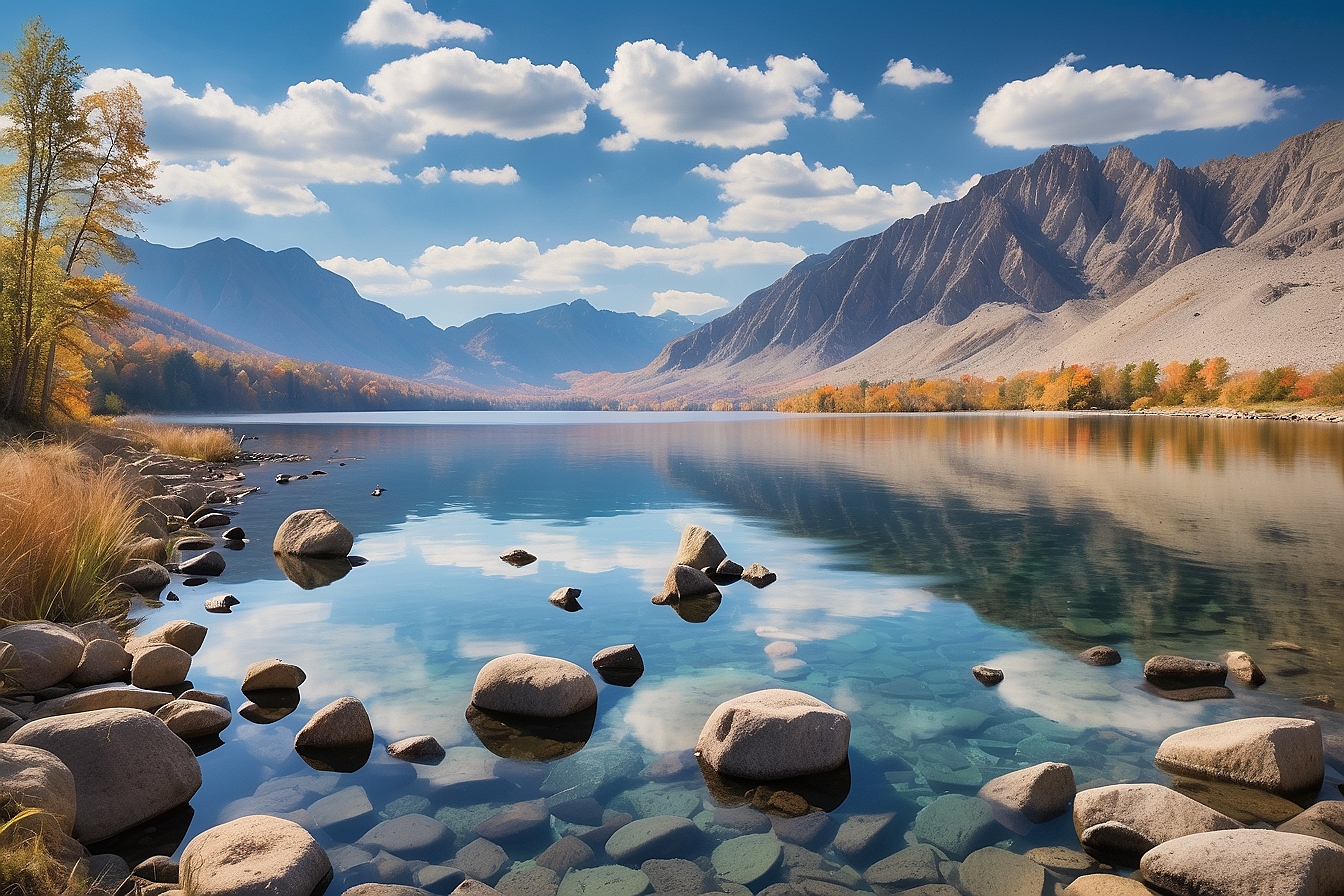As many of us grapple with the sobering reality of vanishing water supplies, it’s difficult not to take notice when our taps splutter into silence and our fields yearn for a drop of rain.
This predicament isn’t new to any of us; we’ve stood by, often feeling helpless as nearly one-third of the planet’s major aquifers teeter on the edge of depletion. In pursuit of sustainable solutions, we delve deep into innovative strategies that promise to stem the unchecked exploitation of groundwater resources.
Join us as we explore practical measures and rally together to protect these vital underwater lifelines for future generations.
Key Takeaways
- One – third of the world’s major aquifers are in danger of being depleted because we’re using groundwater faster than it can be replenished, mainly for agriculture and industry.
- Groundwater depletion leads to serious environmental issues like saltwater intrusion into freshwater sources, land subsidence causing infrastructure damage, and sinkholes that threaten community safety.
- Unsustainable water use is magnified by droughts and climate changes which increase demand while reducing supply, intensifying pressure on already overburdened aquifers.
- Effective solutions include implementing better management with stricter regulations on water extraction rates, adopting sustainable water practices like efficient irrigation systems, and investing in alternative sources such as rainwater harvesting and desalination.
- Education about responsible water usage combined with investment in technologies for recycling wastewater can help protect groundwater supplies for future generations.
Understanding Groundwater Overuse and Depletion
Human activities, such as excessive pumping for agriculture and industrial use, are the main causes of groundwater overuse and depletion. This leads to land subsidence and concerns about water quality.
Human activities as the main cause
We’re draining our aquifers faster than they can naturally replenish, and it’s primarily due to us – human actions. Think about the ways we use water every day: from showering to irrigating vast fields of crops, our demand for water continues to climb.
We pump billions of litres out of the ground without considering how long it takes for these underground reservoirs to fill back up.
Our thirst for groundwater is sending shockwaves through ecosystems and communities alike. As we extract more and more, we risk not only running out of this precious resource but also causing irreversible damage to the very foundation that supports our land.
Our industries gulp down huge volumes, with little thought given to conservation or future consequences. It’s a cycle of overuse that threatens both water quality and availability for generations to come.
Land subsidence and water quality concerns
Land subsidence occurs when the water is excessively pumped from underground aquifers, causing the ground to sink. This can result in damaging consequences such as infrastructure damage, increased flood risks, and altered ecosystems.
Water quality concerns arise due to overextraction of groundwater causing contamination and deterioration of water sources. Excessive withdrawal can lead to a higher concentration of pollutants and salts, reducing the overall quality of drinking water and impacting aquatic habitats.
As environmentally conscious individuals, it is crucial for us to be aware of these challenges so that we can support initiatives aimed at mitigating land subsidence and improving water quality.
Impacts of Groundwater Depletion
The depletion of groundwater can lead to contamination from saltwater intrusion, causing harm to both the environment and drinking water sources. Additionally, excessive groundwater withdrawal can result in sinkholes and land subsidence, posing a threat to infrastructure and communities.
Contamination from saltwater intrusion
Groundwater depletion leads to saltwater intrusion, where excessive withdrawal of freshwater from aquifers allows salty seawater to seep in. This contamination compromises the quality of drinking water and damages ecosystems.
It affects agriculture by making soil less fertile and can even lead to the collapse of freshwater wells. Saltwater intrusion also exacerbates land subsidence, which endangers infrastructure and increases flood susceptibility.
To address this issue, it is vital to promote sustainable water practices and better manage groundwater extraction limits. Investing in alternative water sources and regulating overpumping are crucial steps towards protecting our aquifers from further saltwater intrusion.
Effects on drinking water and the environment
Aquifer depletion greatly affects drinking water and the environment. Excessive withdrawal of groundwater leads to a drop in water tables, impacting the quality and quantity of available drinking water.
As aquifers deplete, contaminants can infiltrate the remaining water, leading to health risks for human consumption. Moreover, environmental ecosystems suffer as reduced groundwater levels disrupt wetlands and wildlife habitats.
The overuse of groundwater also has detrimental effects on the environment. Subsidence caused by depleted aquifers can result in sinkholes that damage infrastructure and harm local communities.
Sinkholes and land subsidence
Sinkholes and land subsidence are consequences of excessive water withdrawal from aquifers. The depletion of groundwater reserves can lead to the collapse of underground structures, resulting in sinkholes that pose serious hazards to infrastructure and human safety.
As water is removed from beneath the surface, the land above begins to compact and sink, leading to a phenomenon known as land subsidence. This not only affects buildings and roads but also damages vital ecosystems.
The overuse of groundwater directly contributes to these environmental risks, making it crucial for us all to understand the impact of our water consumption on the fragile balance within aquifers.
The Current State of Aquifers Worldwide
One-third of major aquifers are at risk of depletion, posing threats to millions of people and ecosystems. This calls for urgent action to protect and preserve these vital water sources.
Third of major aquifers at risk of depletion
One-third of the world’s major aquifers face depletion due to unsustainable overuse. Human activities, such as excessive pumping for agriculture and industrial growth, are the primary contributors to this alarming trend.
As a result, millions of people and ecosystems are at risk, facing threats from water scarcity and deteriorating water quality. The environmental impact of overusing groundwater is significant and can lead to irreversible damage.
Groundwater management urgently needs better regulation and sustainable practices to ensure its preservation for future generations. Investing in alternative water sources could also help alleviate the strain on these aquifers.
Threats to millions of people and ecosystems
The overuse of groundwater poses a severe threat to millions of people and ecosystems worldwide. Depletion of aquifers can lead to drinking water shortages, impacting communities and agricultural practices.
The environmental consequences include land subsidence, saltwater intrusion, and contamination, which can disrupt delicate ecosystems.
Furthermore, the collapse of aquifers can result in sinkholes that pose dangers to infrastructure and natural habitats. As such, it is crucial for us to address the overuse of groundwater through sustainable water management practices and better regulation to protect both human populations and vital ecological systems from the detrimental impacts of aquifer depletion.
Drivers of Groundwater Overuse
Overuse and unsustainable pumping of groundwater are major drivers of aquifer decline. Additionally, the impacts of drought and climate change have put further pressure on already strained water resources.
Overuse and unsustainable pumping
Groundwater overuse and unsustainable pumping play a central role in the depletion of aquifers globally. Excessive withdrawal of groundwater for agricultural, industrial, and domestic purposes has led to a critical imbalance in natural replenishment rates.
This overexploitation not only exacerbates the impact of drought and climate change but also poses significant threats to water quality, with escalating risks of saltwater intrusion and land subsidence.
Unregulated groundwater extraction aggravates environmental degradation, jeopardising ecosystems and wildlife habitats. To address this issue effectively, actions such as promoting sustainable water practices, investing in alternative water sources, and implementing stringent regulations are essential for safeguarding aquifers from irreversible depletion.
Impacts of drought and climate change
As a result of drought and climate change, aquifers face severe impacts due to the reduced recharge of groundwater. The increased evaporation rates and diminished precipitation levels exacerbate the depletion of aquifers, leading to intensified overuse and compromised sustainability.
These conditions not only strain water resources but also heighten the risk of environmental degradation, including saltwater intrusion into freshwater aquifers and land subsidence, endangering ecosystems and drinking water supplies.
Droughts significantly elevate the challenges associated with groundwater management by escalating demand while simultaneously diminishing supply. Climate change amplifies these effects, underscoring the urgent need for sustainable water practices and better regulation to mitigate the detrimental impact on aquifers.
Agriculture and industrial growth
Agriculture and industrial activities contribute significantly to the overuse of groundwater. Intensive irrigation for agriculture and excessive water consumption in industries are major factors leading to aquifer depletion.
The demand for water in these sectors has rapidly increased, putting immense pressure on groundwater resources. Additionally, the expansion of agricultural land and industrial facilities further exacerbates the strain on already dwindling aquifers, leading to long-term environmental degradation and posing a threat to sustainable water use.
The increase in agricultural and industrial growth directly impacts groundwater sustainability, requiring urgent attention towards promoting more efficient water practices within these sectors.
Solutions for Protecting Groundwater
We can promote sustainable water practices, better manage and regulate groundwater usage, and invest in alternative water sources. Want to learn more about how we can protect our threatened aquifers? Keep reading!
Better management and regulation
To protect our aquifers, it’s crucial to implement better management and regulation. This involves monitoring water usage, setting limits on extraction, and enforcing sustainable practices.
By doing so, we can safeguard groundwater resources for future generations and prevent irreversible depletion.
Regulation is essential in preventing overuse of aquifers. It’s necessary to establish clear guidelines for pumping rates and usage restrictions to ensure the sustainability of these vital water sources.
Promoting sustainable water practices
To protect our aquifers and preserve groundwater, we must promote sustainable water practices. This includes adopting water-saving technologies, such as low-flow fixtures and efficient irrigation systems.
Conserving water at home, in agriculture, and in industry is crucial to reducing the overuse of groundwater resources. Additionally, implementing measures to reduce pollution and improve water quality will help ensure that our aquifers remain healthy for future generations.
Investing in infrastructure for rainwater harvesting and wastewater recycling can also contribute to sustainable water practices, helping to reduce demand on groundwater sources. Educating communities about the importance of responsible water use and conservation efforts is essential in safeguarding our aquifers against overexploitation.
Investing in alternative water sources
To ensure a sustainable water supply, we must invest in alternative water sources such as rainwater harvesting and desalination. These methods offer potential solutions to the overuse of aquifers and depletion of groundwater resources.
Rainwater harvesting involves collecting and storing rainwater for later use, reducing the reliance on groundwater. Desalination, on the other hand, allows us to convert seawater into freshwater, providing an additional source of clean water to alleviate pressure on existing aquifers.
Additionally, promoting the use of recycled or reclaimed water for non-potable purposes like irrigation and industrial processes can also help reduce demand for groundwater. By diversifying our water sources through these alternative methods, we can mitigate the environmental impact of overusing aquifers while ensuring a more sustainable future for our water resources.
Conclusion
In conclusion, we must take action to protect our threatened aquifers. Better management and regulation are essential to prevent overuse and depletion. Promoting sustainable water practices will help ensure a future with an adequate supply of groundwater.
Investing in alternative water sources is crucial for mitigating the impacts of overpumping on ecosystems and communities.
FAQs
1. What happens when we overuse groundwater?
Overusing groundwater can lead to a decline in water levels, cause aquifers to collapse and result in the depletion of this crucial resource.
2. How does drought affect our aquifers?
Drought greatly impacts groundwater by reducing the natural replenishment of aquifers, leading to a significant drop in their water levels.
3. Can overexploiting groundwater harm the environment?
Yes, the environmental impact of overuse includes degradation of water quality and damage to ecosystems that depend on stable groundwater supplies.
4. Why should we worry about overpumping from aquifers?
Overpumping can lead to serious problems such as ground subsidence and reduced water availability for future generations due to depleted groundwater reserves.
5. What is meant by ‘aquifer collapse’ and is it preventable?
An aquifer collapse occurs when its structure fails because too much water has been removed; preventing this requires managing our use of these vital water resources carefully.





